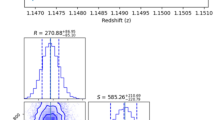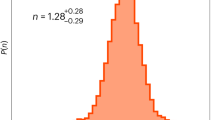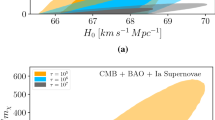Abstract
DICKE discusses the three cosmological numbers: (1) which determines the gravitational constant, (2) which determines the Hubble age of the universe, and (3) the number of particles in the universe. They are related in that: (1) is roughly the reciprocal of (2) and (3) is roughly the square of (2). I assumed that these relations correspond to something fundamental in Nature. With an evolutionary universe (2) varies with time, and then (1) and (3) would also have to vary with time.
This is a preview of subscription content, access via your institution
Access options
Subscribe to this journal
Receive 51 print issues and online access
$199.00 per year
only $3.90 per issue
Buy this article
- Purchase on SpringerLink
- Instant access to full article PDF
Prices may be subject to local taxes which are calculated during checkout
Similar content being viewed by others
Author information
Authors and Affiliations
Rights and permissions
About this article
Cite this article
DIRAC, P. Dirac's Cosmology and Mach's Principle. Nature 192, 441 (1961). https://doi.org/10.1038/192441a0
Issue date:
DOI: https://doi.org/10.1038/192441a0



